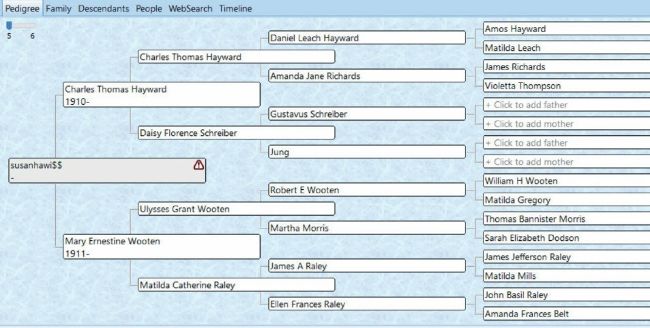Your DNA workshop
CREATING ‘QUICK AND DIRTY’ TREES
This month, Karen Evans gives us a guide to building ‘quick and dirty’ trees, and demonstrates how they can help to turbo-charge the results from our DNA matches
Ihave a confession and, even to me, it sounds odd. When I have a new DNA match, I actually don’t mind if they have a small tree. Why?
Because it gives me the chance to build quick and dirty trees, and I adore building quick and dirty trees! I am not a masochist.
I feel a thud of disappointment if a new match has no clues to get my teeth into, but a name and perhaps one parent on a tree and I can feel my heart beat a little faster with the thrill of the chase.

An example of a quick and dirty tree. You don’t need to spend extra money on a tree like this and it can be assembled very rapidly. If you’re lucky, it will suggest links to other trees you’ve created
What is a quick and dirty tree?
I define a ‘quick and dirty’ tree as one that is:
Quick: If I’m lucky, I want to get back to the match’s 2x great grandparents on all sides within a few hours. This isn’t always possible!
Dirty: I’m using available online information to create a tree and not following the standards of proof I would with my own tree. I use hints on the sites and trees created by other users. Saying that, I do check that the hint is credible.
Ever growing: I have one database for all Q and D trees. Each time I create a tree in this database I am looking for possible links to my known tree or other trees I’ve created which do not yet link to my known family.
Unsearchable for anyone else: There may be mistakes on this tree which I don’t want anyone to inadvertently copy.
Free: I don’t spend money creating this tree but use the sites I have already have access to. I have a subscription for Ancestry and Findmypast so mine their resources, but I don’t pay to access a site if only the search engine is free.